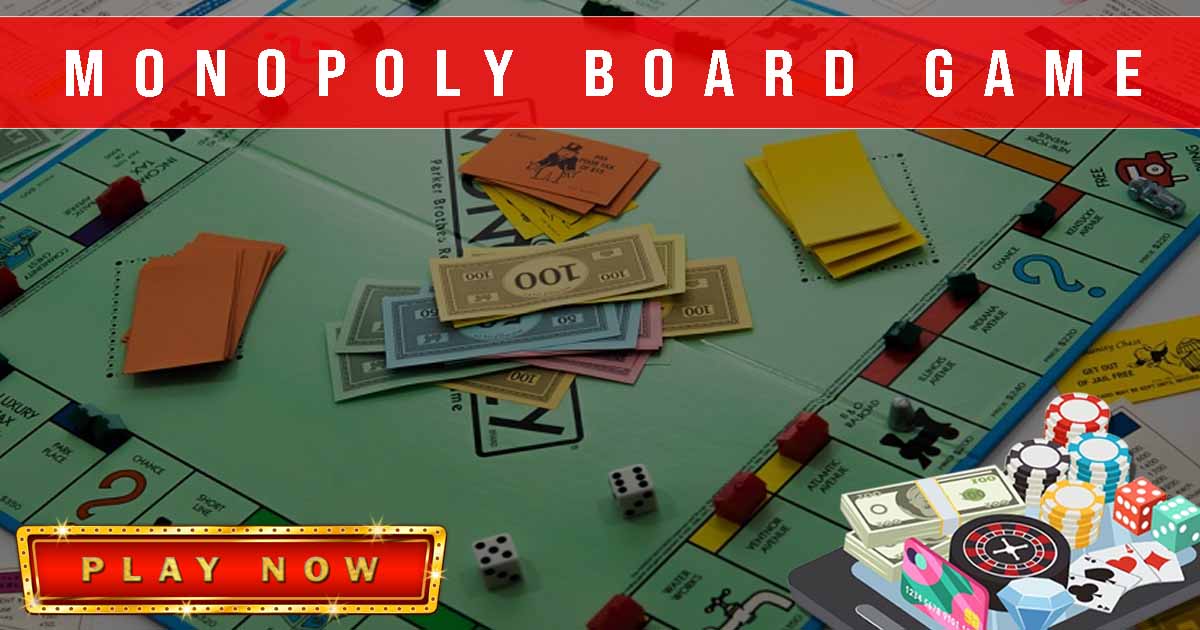Welcome to the world of Monopoly Board Game, the classic board game that has been entertaining families and friends for generations. Setting up a Monopoly board game might seem like a straightforward task, but getting it right is essential for a smooth and enjoyable gaming experience.
In this guide, we’ll take you through the step-by-step process of setting up your Monopoly board, from gathering the materials to starting your first turn, courtesy of Apex Gaming 88. So, let’s roll the dice and get started!
Table of Contents
Gather Your Monopoly Materials
Before you can embark on your Monopoly Board Game adventure, you need to make sure you have all the necessary components.
Here’s what you’ll need:
The Monopoly Board Game: This is the heart of the game, where all the action takes place. It’s a foldable board with various spaces for properties, cards, and more.
Game Tokens: Monopoly offers a variety of tokens to choose from, including a dog, car, hat, and more. Each player selects one to represent themselves during the game.
Play Money: Monopoly comes with colorful play money in different denominations. You’ll use this to buy properties, pay rent, and make various transactions.
Property Cards, Deeds, and Titles: These cards represent the properties you can buy. They include important information like rent prices and property groupings.
Houses and hotels: These small plastic pieces are used to upgrade your properties and increase rent prices.
Chance and Community Chest Cards: These cards add an element of surprise to the game, with instructions that can either benefit or challenge players.
Dice and the Speed Die (if applicable): Monopoly uses two regular six-sided dice, and some editions include a speed die for faster gameplay.
Banker Responsibilities: One player takes on the role of the banker, responsible gambling for distributing money, managing properties, and overseeing transactions.
Preparing the Monopoly Game Board
Once you’ve gathered all the materials, it’s time to set up the Monopoly board game.
To play Monopoly Board Game, follow these steps:
Unboxing and Organizing: Carefully unbox your Monopoly board game and arrange all the components neatly.
Setting Up the Game Board: Lay the game board flat on a table or other playing surface. Make sure it’s centered so that all players can reach it comfortably.
Sorting the Chance and Community Chest Cards: Shuffle the Chance and Community Chest card decks and place them in their designated spots on the board.
Distributing Play Money: Each player should receive an equal amount of play money. In the standard version, each player starts with $1,500, consisting of two $500 bills, four $100 bills, one $50 bill, one $20 bill, two $10 bills, one $5 bill, and five $1 bills.
Choosing Tokens: Players take turns selecting their tokens. The order can be determined by rolling the dice, with the highest roll going first.
Property Allocation
Now that you’ve set up the game board, it’s time to allocate properties:
Dealing Out Properties: Shuffle the property deed cards and place them face down. Each player takes turns drawing a card and purchasing the corresponding property at its listed price. If a player chooses not to buy a property, it goes up for auction, and the highest bidder wins.
Property Title Deeds: When a player acquires a property, they also receive the corresponding property title deed card. These cards provide important details about the property, including its purchase price and rent prices.
Starting Cash: After acquiring properties, each player should deduct the total purchase price from their starting cash. The remaining money is their initial capital to use in the game.
Monopoly Board Game House Rules (Optional)
While the standard Monopoly rules are well-known, many players like to customize their games with house rules. Here are some common house rules:
Free Parking Jackpot: Some players put a portion of the money collected from various penalties into a “Free Parking” jackpot, which the player who lands on the space can claim.
Speed Die (if applicable): If you’re playing with the speed die, familiarize yourself with its rules and incorporate it into your game.
Trading Rules: Discuss any additional trading rules your group may want to implement, such as allowing “gentlemen’s agreements” or trades involving future considerations.
It’s essential to agree on these house rules before starting the game to ensure a fair and enjoyable experience for everyone.
Start the Game and Build your Houses and Hotels
With your Monopoly board game set up and the rules established, it’s time to kick off the game:
Roll to Determine First Player: Each player rolls the dice, and the player with the highest total goes first. The order of play then proceeds clockwise.
Rolling the dice: The player whose turn it is rolls both dice and moves their token the corresponding number of spaces clockwise around the board.
Monopoly Gameplay Begins: As the first player moves, the game officially begins. Players take turns clockwise, following the rules of buying properties, collecting rent, drawing cards, and making strategic decisions, which is evidently an engaging and fun game.
Free Parking! Additional Tips and Strategies
While Monopoly Board Game is a game of chance and a fun game, there are some tips and strategies that can help you navigate the game more effectively:
Property Acquisition: Aim to acquire complete property groups to increase your rent income.
Property Upgrades: Invest in houses and hotels when you have a complete property group to maximize rent.
Negotiation: Don’t be afraid to negotiate with other players for property trades and deals.
Money Management: Keep an eye on your cash flow and avoid overspending, especially in the early game.
Jail Strategy: Depending on the situation, staying in jail can be a strategic move to avoid landing on opponents’ properties.
Conclusion
Congratulations! You’ve successfully set up your Monopoly board game and are ready for hours of non-stop fun Monopoly games with friends and family. Sell property, buy, and build as many houses as possible using monopoly money. Remember, Monopoly is not just about winning; it’s about enjoying the journey, making deals, and experiencing the ups and downs of real estate tycoons.
FAQs (Frequently Asked Questions):
Q1: Can I use my own house rules when playing Monopoly Board Game?
A1: Absolutely! Many players have their own house rules that can add unique twists to the board game. Just be sure to agree on these rules with your fellow players before starting to ensure a fair and enjoyable experience for everyone.
Q2: What happens if a player lands on an unowned property and doesn’t want to buy it?
A2: In this case, the property goes up for auction. All players, including the one who landed on the property on the board game, can bid on it. The highest bidder wins the property and must pay the winning bid to the bank.
Q3: Can I trade properties with other players?
A3: Yes, trading is a fundamental part of Monopoly. Players can negotiate trades involving properties, money, and even “future considerations” to benefit both parties which is a unique touch of the classic board game.
Q4: What is the objective of Monopoly?
A4: The objective of the Monopoly board game is to bankrupt your opponents by acquiring properties, charging rent, and strategically managing your money. The last player remaining with money and assets wins the game.
Q5: How do I get out of jail in Monopoly?
A5: To get out of jail, you can either roll a double on your next turn (using both dice) or pay a $50 fine. If you fail to roll a double after three turns, you must pay the $50 fine and then move the amount rolled on your third turn.
With this comprehensive guide, you’re well-equipped to set up and enjoy a board game of Monopoly with friends and family. Whether you’re a seasoned Monopoly pro or a beginner, remember that the most important thing is to have fun and create lasting memories around the Monopoly board game.



